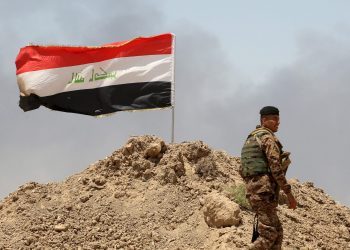Rand Corporation, The inability of the United States to monitor insurgent trends in Iraq and apply new counterinsurgency tactics led many Iraqi civilians to side with sectarian groups, propelling the country to the brink of civil war, according to a new RAND Corporation study.
The study, “Counterinsurgency in Iraq: 2003-2006,” is the latest in a series examining insurgency and counterinsurgency, and details how the United States should improve its capabilities for future conflicts. The capstone report of the series, “War by Other Means,” was released in February by RAND, a non-profit research organization.
Sponsored by the Department of Defense, the latest study examined U.S. counterinsurgency efforts from 2003 to 2006. It found that funding in Iraq during this period was focused heavily on safeguarding U.S troops – such as for improved vehicle armor and electronic detection and jamming equipment – while less attention was paid to protecting Iraqi citizens.
As a result, civilians were often led into a Faustian bargain in which they sought the help of sectarian extremists they otherwise might have avoided. “The failure to protect the Iraqi population contributed significantly to the increase in insurgency and sectarian violence,” said co-author Edward O'Connell, a senior defense analyst at RAND who undertook three assignments in Iraq from 2004 to 2007.
In May 2004, Iraqi deaths made up 35 percent of all deaths suffered in Iraq by insurgent attacks. But by July 2004 and for the next 18 months, Iraqis made up 90 percent of all insurgent-caused deaths.
The conflict in Iraq is not simply a revolt by disgruntled Sunni's against the Iraqi government but also a many-sided struggle for power following the collapse of the Ba'athist party, the report finds. It notes that the three major groups at the core of the insurgency – Sunni Arabs, Shi'ite Arabs and Kurds – are themselves split into factions, making it extremely difficult to confront all of the elements that are responsible for violence in Iraq.
“Were insurgency the only challenge, U.S. and Iraqi government forces might at least contain the violence,” O'Connell said. “But the multiple challenges of separatists, insurgents, extremists, militias and criminals have made this a much more difficult challenge.”
The report finds that while the Vietnam War is in many ways fundamentally different than the conflict in Iraq, U.S. forces should have profited by the experience in counterinsurgency fighting the Viet Cong. However, the report states that, except by the Army's Special Forces units, those lessons had largely been forgotten and have had to be relearned anew.
In Iraq, the U.S. relied heavily on technology and was slow to effectively implement a political-military-economic solution, the report finds. Because counterinsurgency efforts demand the harmonious use of civilian and military means, unity of effort – where military and civilian entities are subject to common control in pursuit of the same goal – is essential.
The report makes a number of recommendations, including:
— Protect the population. Understandably, senior military commanders in Iraq initially focused on roadside bombs and their impact on U.S. forces, but failed to give adequate attention to the threat from suicide bombers and their impact on civilian safety as that threat rapidly evolved.
— Have Army Special Forces increase training and joint operations with their Iraqi counterparts. Moreover, the Army should conduct counterinsurgency training and exercises prior to deployment to educate conventional force commanders in special operations.
— Develop a planning process embracing all U.S. government departments that is coordinated with troops in the field.
— Quickly develop a coherent and balanced counterinsurgency strategy, and require senior military commanders and planners to assess counterinsurgency operations.
— Give authority to direct all counterinsurgency plans to one person, eliminating the interagency tension that has hampered the current counterinsurgency effort.
Some of these steps have been put in place since the period covered by the report, but there will be a continuing need to evaluate the success of current counterinsurgency efforts and make further adjustments based upon unflinching and fearless analysis of what is working and what not.
“The need to continually reassess counterinsurgency strategy and tactics implies that military and civilian leaders must be willing to call policies and practices that are not working to the attention of senior decision makers,” O'Connell said.
Read Full Report









